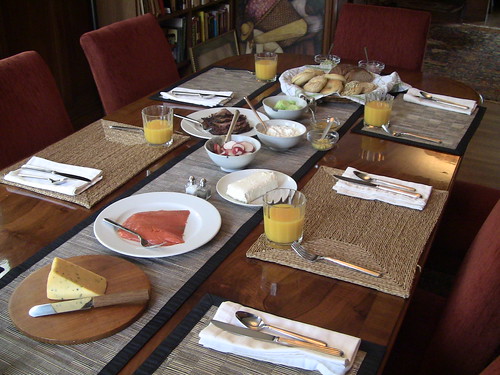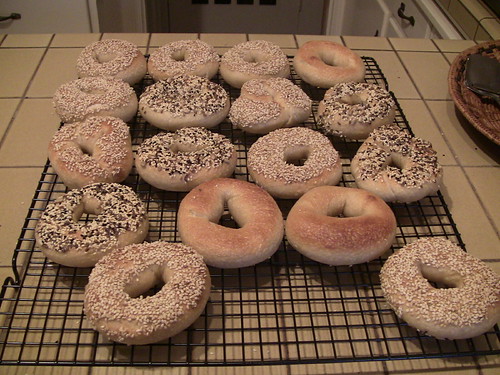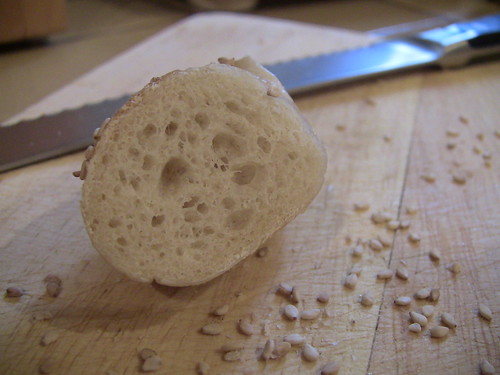How did I become infatuated with idea of incorporating home milling into my bread making?
... the baker Gérard Rubaud.
His story and methods of crafting bread and levain maintenance incorporating fresh milled flour captivated me. From his attention to detail (using all of his senses) to his relaxed but focussed methods, it seemed to speak of another way of making bread. A craftsman’s way perhaps? (sorry … but I am still reading Richard Sennett’s book “The Craftsman” and have found the subject matter fascinating)
This planted a seed for milling my own flour … a seed that took a few years to germinate mind you.
A week ago I put together a “quick” version of this bread for a weekend lunch with family and friends. I thoroughly enjoyed making it and even more so at lunch the next day. I had no photos of the process or the final crumb to share so I have endeavoured to make this bread again … with a little more effort this time.
From what I have read about Gérard and his processes, the heart and soul of his bread is his lovingly maintained levain. It is a firm levain kept in warm conditions refreshed frequently. It is fed AP flour, freshly milled sifted flours and a small addition of salt to keep enzyme activity under control. (The caught material from sifting is added to the final dough)
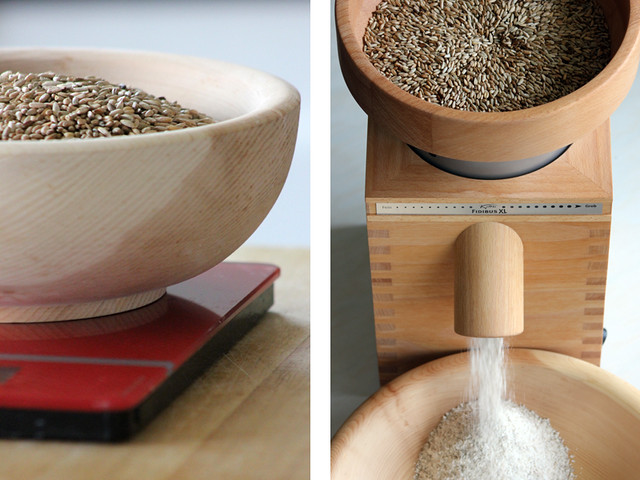
I already had the firm starter. We definitely have the warm conditions at the moment and the sifted fresh milled flours are also possible. Last year during the peak of our summer I regularly added salt to my firm starters to stop them turning to goo by the end of the day. I saw no decrease in rising activity and if anything I noticed an increase in flavours during the warmer periods. I think the addition of salt is even more essential with the addition of freshly milled flour.
I have maintained the levain during the week with two feedings a day except for the day before the bake where I gave the levain three feedings six hours apart and built the necessary amount for the final dough and also the olive bread from my last posting.

Gérard Rubaud’s 'pain de tradition'
Formula
Overview | Weight | % |
Total dough weight | 2000g | |
Total flour | 1143g | 100% |
Total water | 857g | 75% |
Total salt | 22g | 2% |
Prefermented flour | 171g | 15% |
Desired dough temp 26°C | | |
| | |
Levain build – 5-6 hrs 26°C | | |
Starter (not included in final dough) | 85g | 50% |
Flour (I used 70% AP flour, 18% Sifted fresh milled wheat, 9% sifted fresh milled spelt and 3% sifted fresh milled rye) | 171g | 100% |
Water | 85g | 50% |
Salt | 1g | 1% |
| | |
Final dough 26°C | | |
Levain | 256g | 30% |
AP Flour | 680g | 70% |
Freshly milled whole wheat flour | 175g | 18% |
Freshly milled spelt flour | 87g | 9% |
Freshly milled rye flour | 30g | 3% |
Water | 772g | 79% |
Salt | 21g | 2% |
Method
- Autolyse flour and water 45 mins (hold back 50 grams of water)
- Add levain and knead (French fold) 5-10 mins. Return the dough to a bowl and add salt and 50 grams of water and squeeze through bread to incorporate (dough will separate then come back together smoothly) then knead a further 5-10 mins.
- Bulk ferment 3 hours with three stretch and folds at 30 mins in the first 1.5 hours. (could be taken back to two sets of folds as the dough had gained considerable strength by third set of folds)
- Preshape and bench rest for 20 mins
- Shape (allow boules to rest seam side down on bench for a minute before placing into baskets) and proof for 2.5 – 3 hours
- Bake in steamed oven for 10 mins at 250°C then 30 mins at 200°C


Dumping, dividing and preshaping
The oven spring was astounding … I baked both loaves at the same time on different shelves and they both reached the shelf above. There was a bit of juggling and crafty shelf removal to extract them from the oven safely :)
They are almost weightless.
The crusts are somewhat paler than the high extraction breads I have baking notably the three grain bread where I use two starters. (I love how the use of a rye starter adds a red hue to the crusts in those breads)
The gentleness of the crust proved a test when it came time to slice but we were rewarded with a delicate translucent crumb and sweet aroma. The flavour and texture is undemanding with only subtle sourness … hard pressed to call it sour at all. It melts in the mouth.
This is a bread best torn, not sliced.
I am still not entirely happy with the steaming setup in my oven when baking on two shelves. I am wondering if the steam is rising higher or sitting above the bottom shelf leading to uneven results. I bake for the first ten minutes with the oven switched off as I am unable to turn off the fan force feature.


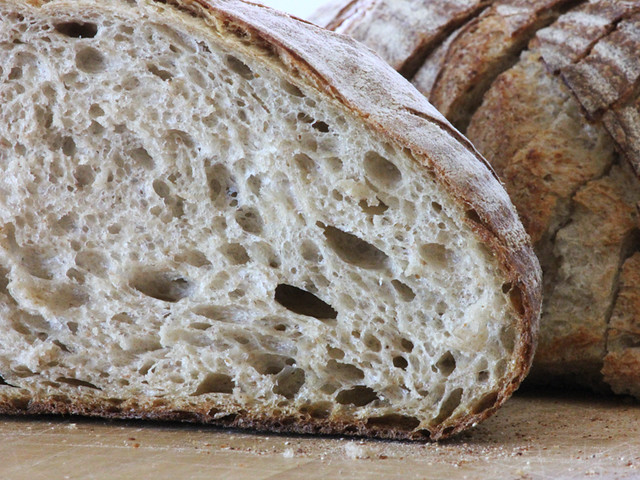

Where to from here?
For me this kind of levain maintenance is not sustainable for a home baker who usually only has the weekends to bake, both for the waste it creates and the amount of time required for minimum twice daily feedings. If however I was baking daily or a few times weekly in my imagined wood-fired oven this would be the signature bread I would make for my customers.
For myself though, the flavour and added health benefits of a high extraction loaf with fresh milled flours is superior. It’s the bread I miss when I am not at home.
All the best, Phil
p.s. Hey Aneeks, does this bread look familiar? Hope you liked the loaf we left for you :)




















